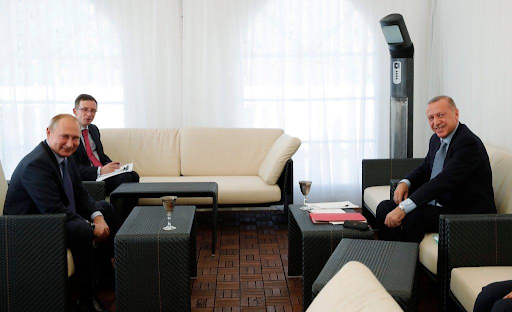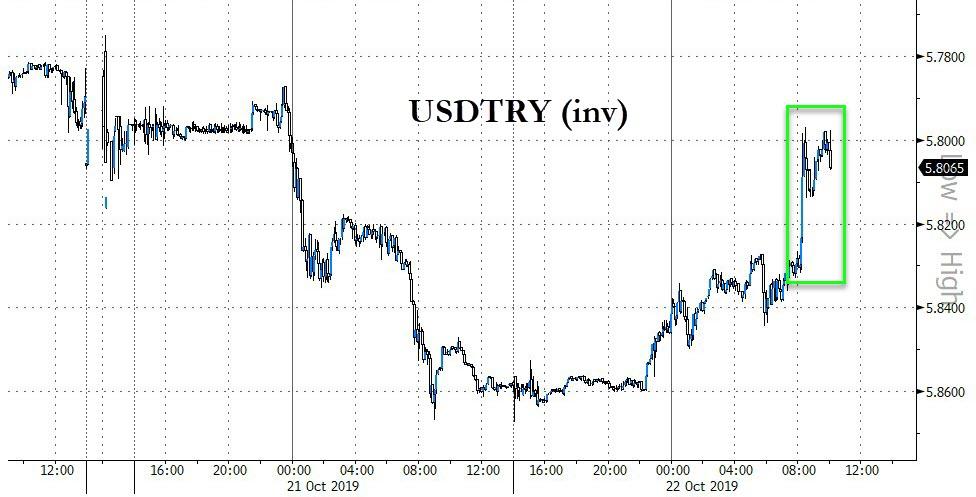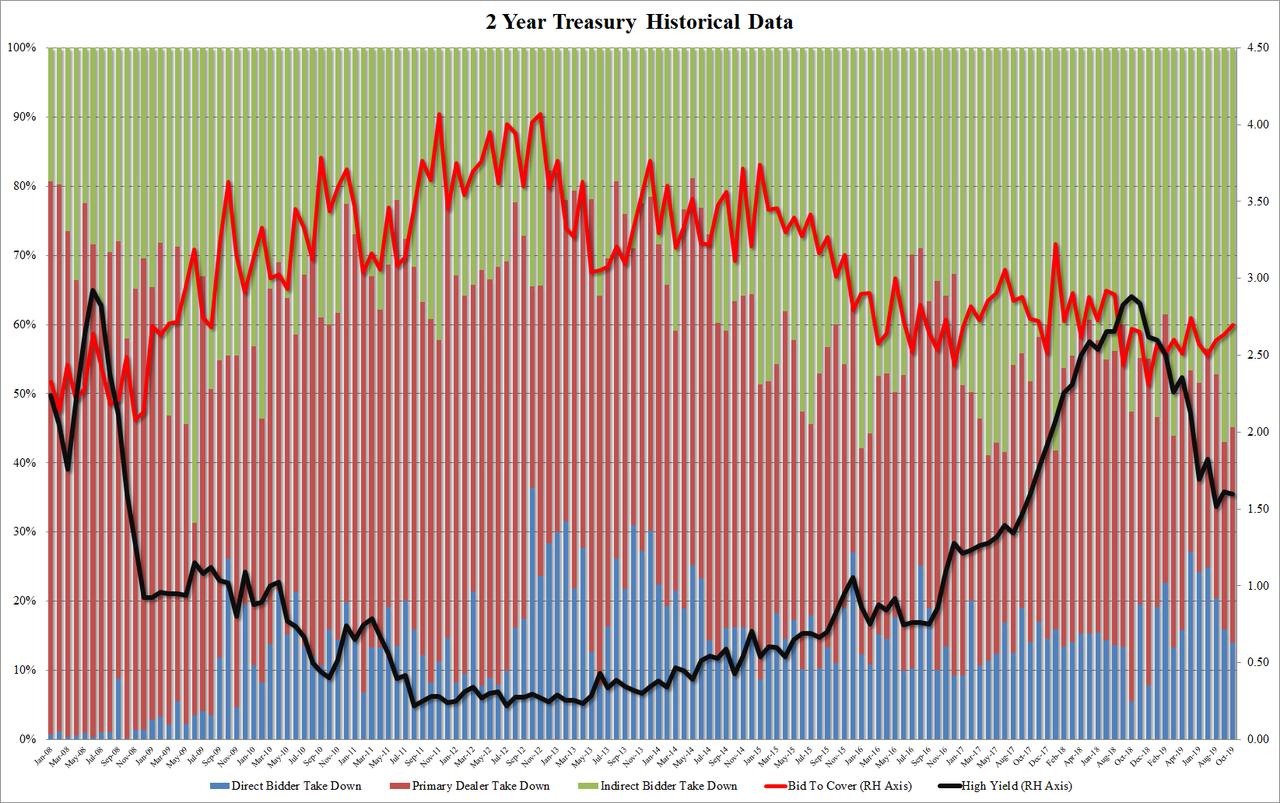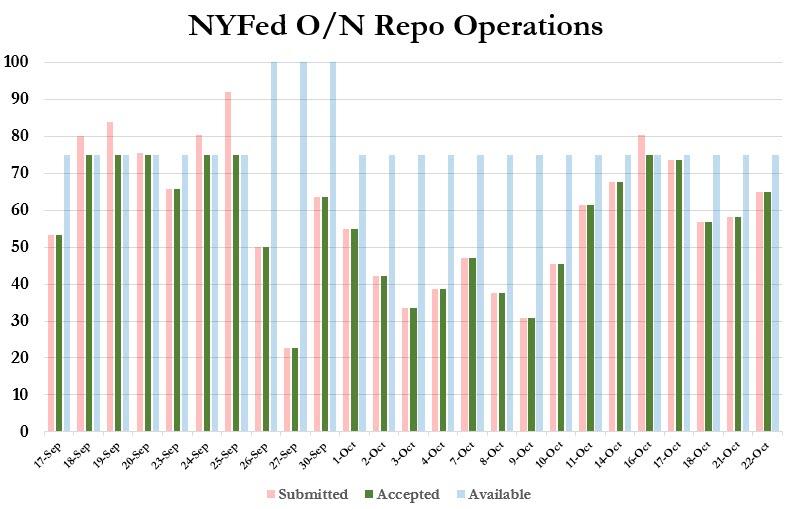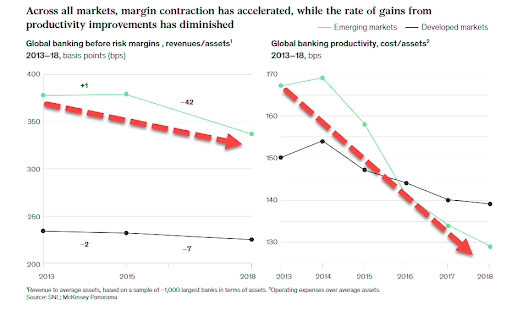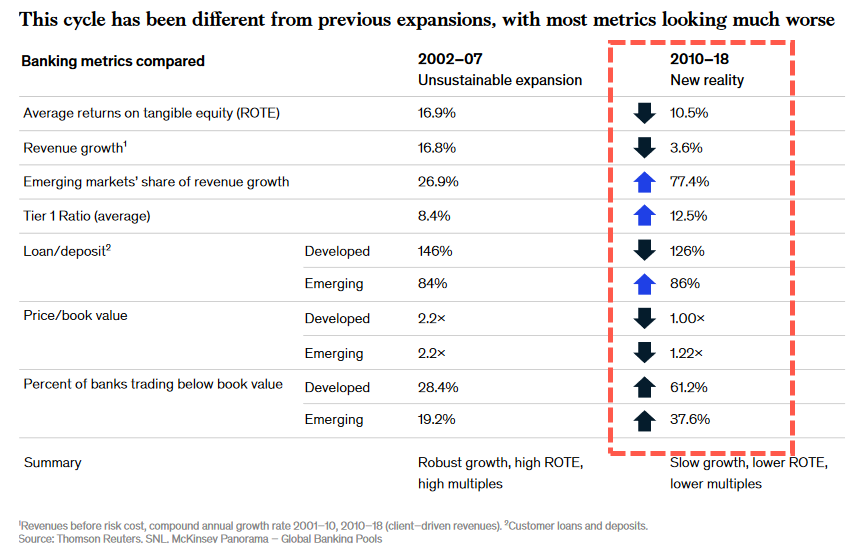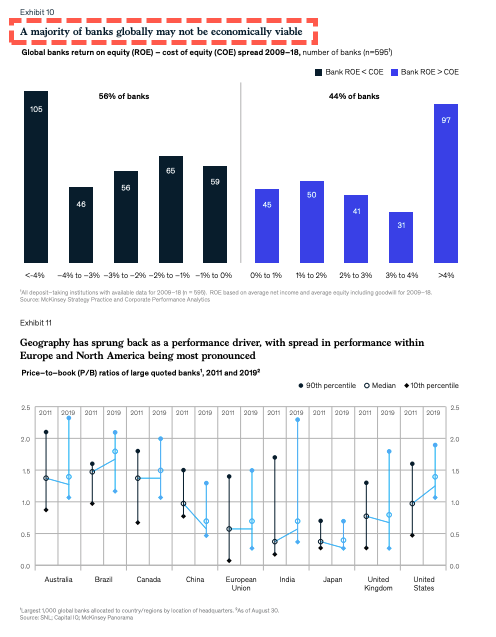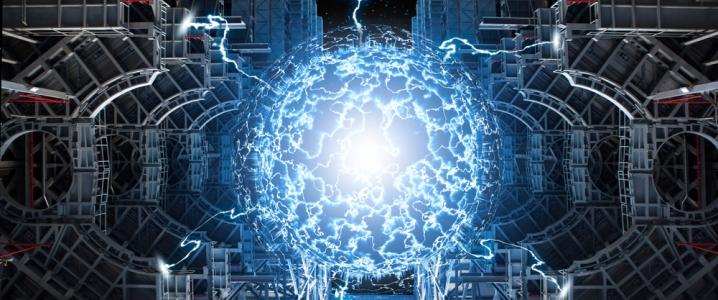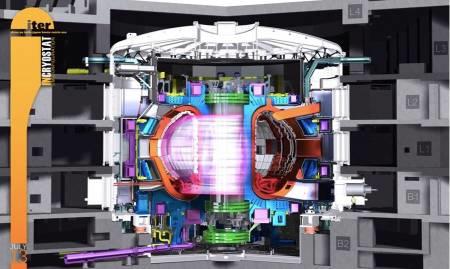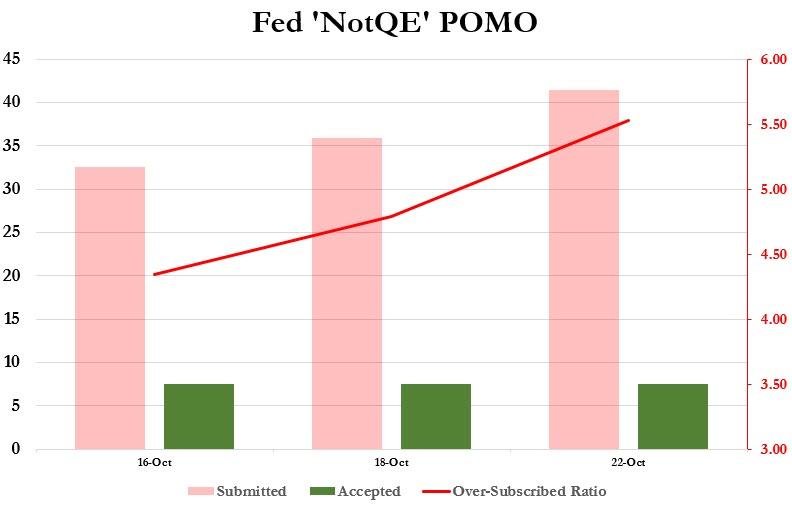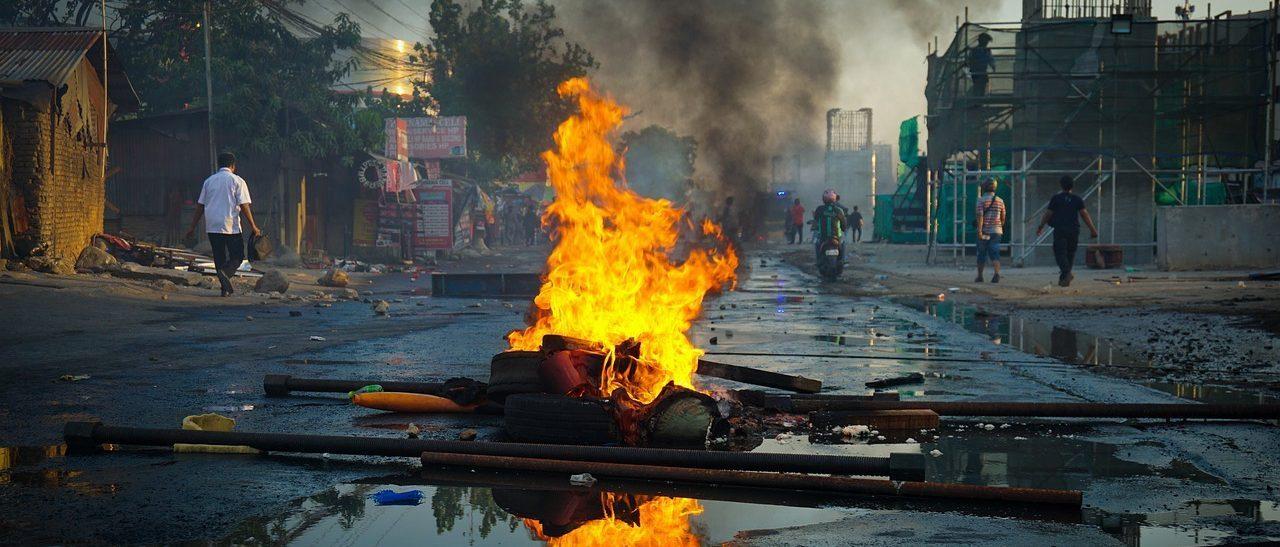Lira Jumps On Reports Of Turkish Deal With Russia Over Northern Syria “Safe Zone”
Update (1315ET): Turkey’s Erdogan says deal reached with Russia for Kurdish fighters to move out of Syrian border area within 150 hours establishing a “safe zone” inside Syria.
As Haaretz reports, Russian President Vladimir Putin said on Tuesday that talks with his Turkish counterpart Tayyip Erdogan had yielded what he called momentous results for Syria.
Erdogan and Putin agreed to establish a “safe zone” inside Syria, a senior Turkish official said shortly after the two leaders’ 6-hour-long meeting pic.twitter.com/PhfC3LNTz2
— Bloomberg TicToc (@tictoc) October 22, 2019
Putin and Erdogan reportedly agreed during their meeting that the Turkish operation in Syria can continue up to 32 kilometers inside Syria’s border, Russian Foreign Minister Sergey Lavrov said.
The Turkish Lira jumped 1% on the headlines, erasing yesterday’s losses…
Source: Bloomberg
Additionally, President Trump has authorized $4.5 million in direct support to the White Helmets, and Kurdish fighters have reportedly completed their pullout from a zone along the Syrian border as required under a U.S.-brokered cease-fire deal hours before it was set to expire Tuesday, U.S. and Kurdish official said.
* * *
As we detailed earlier, just hours before the end of the 120-hour deadline of the ceasefire agreement negotiated between US and Turkey, President Putin hosted Turkey’s Erdogan in Sochi, reportedly with an aim to learn of Ankara’s plans in its northern Syria operation against the Kurds, and to capitalize on Russia’s position as main driver in the region in the wake of a US withdrawal.
This as Secretary of State Mike Pompeo said on Tuesday that “some progress has certainly been made” ahead of the ceasefire’s expiration. “The President used America’s economic might, our economic power, to avoid a kinetic conflict with a NATO ally,” Pompeo said.
Putin and Erdogan reportedly met for over four hours behind closed doors, with only the personal translator for each present, in a meeting expected to be long and comprehensive.
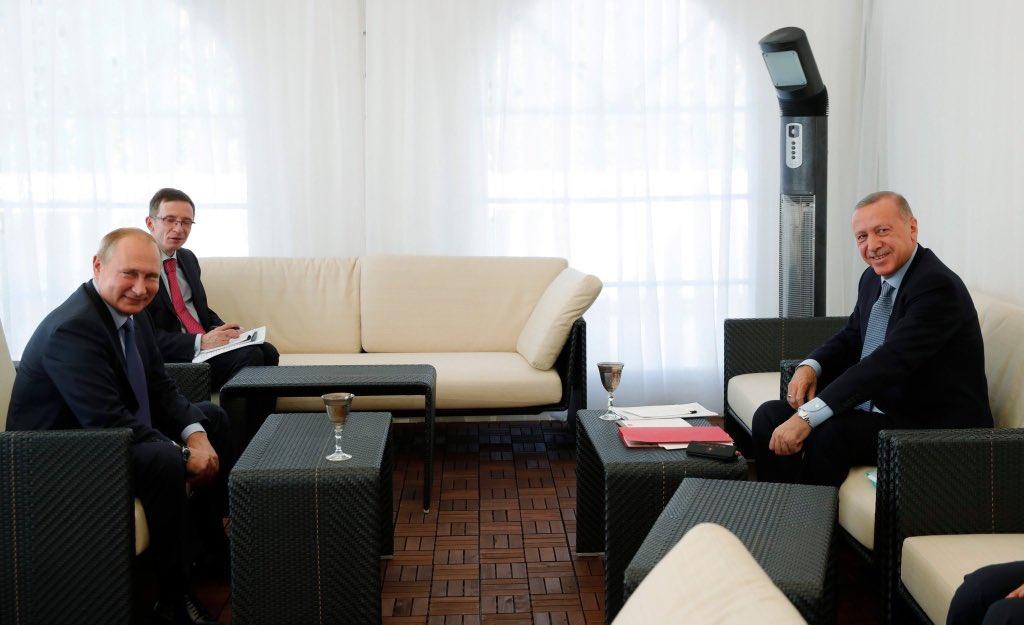
Erdogan is expected to seek Putin’s blessing on the Turkish administered ‘safe zone’ in northeast Syria, after also boasting the Turkish operation has already wrested some 160 settlements along the border from the Kurdish-led Syrian Democratic Forces. Kurdish YPG militia are required to withdraw from a 120km long strip of border area to make way for a Turkey-administered ‘safe zone’ inside Syria, according to the US-Turkey brokered plan.
“If the promises made by the U.S. to our country are not kept, we will resume our offensive from where we left it, and this time with great determination,” Erdogan told reporters just before heading to Sochi Tuesday. And Putin over a week ago said in a state broadcast interview: “Syria must be free from other states’ military presence. And the territorial integrity of the Syrian Arab Republic must be completely restored.”
Only Putin and Erdogan, with each’s translator, were in the room for the bilateral summit:
This is interesting:
Erdogan and Putin had tete-a-tete in Sochi with only presence of an Russian translator pic.twitter.com/VnfR750bbs
— Ragıp Soylu (@ragipsoylu) October 22, 2019
We noted previously that with the Trump White House wiping its hands of Syria involvement, and now rapidly moving some 1,000 troops into western Iraq, Putin is poised for a ‘deal of the century’ that would cement Russia’s role as final mediator in the eight-year long Syria war.
The reunion of the Kurdish-led Syrian Democratic Forces (SDF) with Assad, to the consternation of Washington hawks, has already been hailed as a great Moscow victory.
Erdogan is actually pushing for a proposed 300-mile-long safe zone; the deal negotiated with Vice President Pence in Ankara last Thursday delineates a 120-mile strip along the border. Putin is unlikely to agree to anything other than a very temporary Turkish-administered zone, if at all, given he’s been adamant that all sovereign Syrian territory is eventually returned to Damascus’ control.
The WSJ commented of Russia’s role in northeast Syria, and Erdogan’s desire for an extended zone of control:
Moscow’s commitment to securing the remaining three quarters will be essential because the Russian-backed army of Syrian President Bashar al-Assad last week struck an agreement to work with the Kurdish militia. Taking advantage of the void created by departing U.S. troops, Mr. Assad’s soldiers have been deployed in several border towns held by the Kurds.
Meanwhile, perhaps to be expected, the mainstream media is already lamenting Washington effectively ceding all leverage to Moscow.
For example Business Insider on Tuesday decried that the “US is now left watching Syria’s fate being decided by two other nations: Turkey and Russia.”
Tyler Durden
Tue, 10/22/2019 – 13:22
via ZeroHedge News https://ift.tt/35YKFqu Tyler Durden
